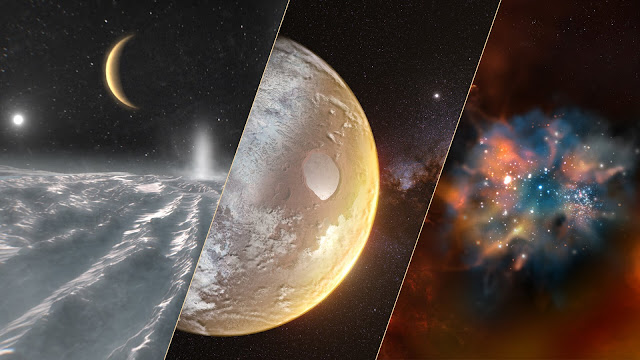CERN - ALICE Experiment logo.
June 12, 2021
New measurements by the ALICE collaboration show that the way charm quarks form hadrons in proton-proton collisions differs significantly from expectations based on electron collider measurements.
Image above: A view of the ALICE experiment during the installation of new components. (Image: CERN).
Quarks are among the elementary particles of the Standard Model of Particle Physics. Besides up and down quarks, which are the basic building blocks of ordinary matter in the Universe, four other quark flavours exist and are also abundantly produced in collisions at particle accelerators like the CERN Large Hadron Collider. Quarks are not observed in isolation due to a fundamental aspect of the strong interaction, known as colour charge confinement. Confinement requires particles that carry the charge of the strong interaction, called colour, to form states that are colour-neutral. This in turn forces quarks to undergo a process of hadronisation, i.e. to form hadrons, which are composite particles mostly made of a quark and an antiquark (mesons) or of three quarks (baryons). The only exception is the heaviest quark, the top, which decays before it has time to hadronise.
At particle accelerators, quarks with a large mass, such as the charm quark, are produced only in the initial interactions between the colliding particles. Depending on the type of beam used, these can be electron-positron, electron-proton or proton-proton collisions (as at the LHC). The subsequent hadronisation of charm quarks into mesons (D0, D+, Ds) or baryons (𝛬c, 𝛯c, …) occurs on a long space-time scale and was considered to be universal - that is, independent of the species of the colliding particles - until the recent findings by the ALICE collaboration.
Graphic above: Fraction of charm quarks that hadronise to form each species of mesons (quark-antiquark) or baryons (three quarks). The ALICE measurements in proton-proton collisions show a larger fraction of baryons than those at colliders using electron beams. (Image: CERN).
The large data samples collected during Run 2 of the LHC allowed ALICE to count the vast majority of charm quarks produced in the proton-proton collisions by reconstructing the decays of all charm meson species and of the most abundant charm baryons (𝛬c and 𝛯c). The charm quarks were found to form baryons almost 40% of the time, which is four times more often than what was expected based on measurements previously made at colliders with electron beams (e+e- and ep in the figure below).
These measurements show that the process of colour-charge confinement and hadron formation is still a poorly understood aspect of the strong interaction. Current theoretical explanations of baryon enhancement include the combination of multiple quarks produced in proton-proton collisions and new mechanisms in the neutralisation of the colour charge. Additional measurements during the next run of the LHC will allow these theories to be scrutinised and further our knowledge of the strong interaction.
Read more in the article by ALICE and on the ALICE website: https://arxiv.org/abs/2105.06335 and
https://arxiv.org/abs/2105.06335
Note:
CERN, the European Organization for Nuclear Research, is one of the world’s largest and most respected centres for scientific research. Its business is fundamental physics, finding out what the Universe is made of and how it works. At CERN, the world’s largest and most complex scientific instruments are used to study the basic constituents of matter — the fundamental particles. By studying what happens when these particles collide, physicists learn about the laws of Nature.
The instruments used at CERN are particle accelerators and detectors. Accelerators boost beams of particles to high energies before they are made to collide with each other or with stationary targets. Detectors observe and record the results of these collisions.
Founded in 1954, the CERN Laboratory sits astride the Franco–Swiss border near Geneva. It was one of Europe’s first joint ventures and now has 23 Member States.
Related links:
ALICE experiment: https://home.cern/science/experiments/alice
Large Hadron Collider (LHC): https://home.cern/science/accelerators/large-hadron-collider
For more information about European Organization for Nuclear Research (CERN), Visit: https://home.cern/
Image (mentioned), Graphic (mentioned), Text, Credits: CERN/By Andrea Dainese.
Best regards, Orbiter.ch
















































